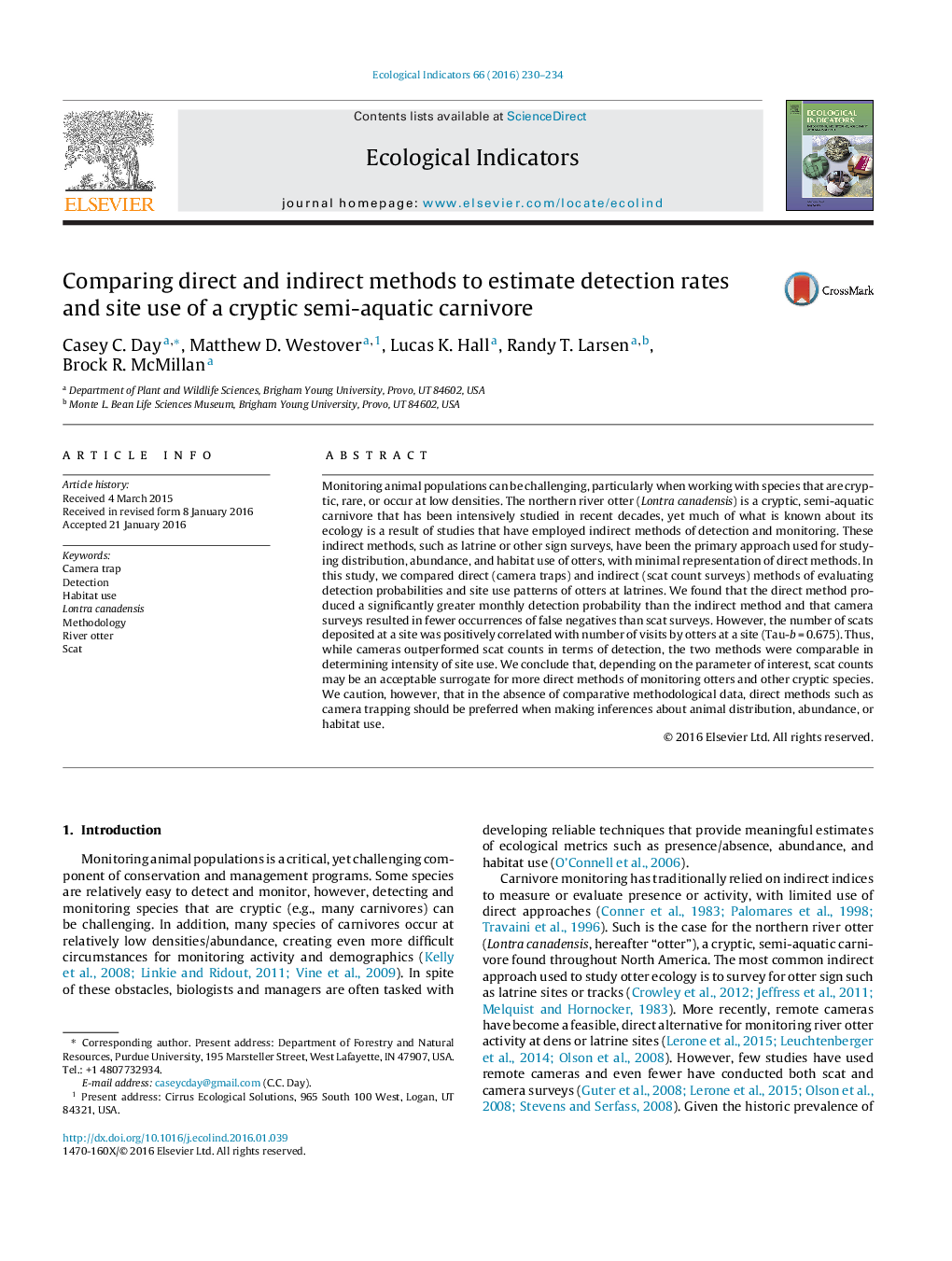| کد مقاله | کد نشریه | سال انتشار | مقاله انگلیسی | نسخه تمام متن |
|---|---|---|---|---|
| 6293440 | 1617136 | 2016 | 5 صفحه PDF | دانلود رایگان |
عنوان انگلیسی مقاله ISI
Comparing direct and indirect methods to estimate detection rates and site use of a cryptic semi-aquatic carnivore
ترجمه فارسی عنوان
مقایسه روش های مستقیم و غیر مستقیم برای تخمین میزان تشخیص و استفاده از مکانی گوشتخوار نازک آبی
دانلود مقاله + سفارش ترجمه
دانلود مقاله ISI انگلیسی
رایگان برای ایرانیان
کلمات کلیدی
موضوعات مرتبط
علوم زیستی و بیوفناوری
علوم کشاورزی و بیولوژیک
بوم شناسی، تکامل، رفتار و سامانه شناسی
چکیده انگلیسی
Monitoring animal populations can be challenging, particularly when working with species that are cryptic, rare, or occur at low densities. The northern river otter (Lontra canadensis) is a cryptic, semi-aquatic carnivore that has been intensively studied in recent decades, yet much of what is known about its ecology is a result of studies that have employed indirect methods of detection and monitoring. These indirect methods, such as latrine or other sign surveys, have been the primary approach used for studying distribution, abundance, and habitat use of otters, with minimal representation of direct methods. In this study, we compared direct (camera traps) and indirect (scat count surveys) methods of evaluating detection probabilities and site use patterns of otters at latrines. We found that the direct method produced a significantly greater monthly detection probability than the indirect method and that camera surveys resulted in fewer occurrences of false negatives than scat surveys. However, the number of scats deposited at a site was positively correlated with number of visits by otters at a site (Tau-b = 0.675). Thus, while cameras outperformed scat counts in terms of detection, the two methods were comparable in determining intensity of site use. We conclude that, depending on the parameter of interest, scat counts may be an acceptable surrogate for more direct methods of monitoring otters and other cryptic species. We caution, however, that in the absence of comparative methodological data, direct methods such as camera trapping should be preferred when making inferences about animal distribution, abundance, or habitat use.
ناشر
Database: Elsevier - ScienceDirect (ساینس دایرکت)
Journal: Ecological Indicators - Volume 66, July 2016, Pages 230-234
Journal: Ecological Indicators - Volume 66, July 2016, Pages 230-234
نویسندگان
Casey C. Day, Matthew D. Westover, Lucas K. Hall, Randy T. Larsen, Brock R. McMillan,
